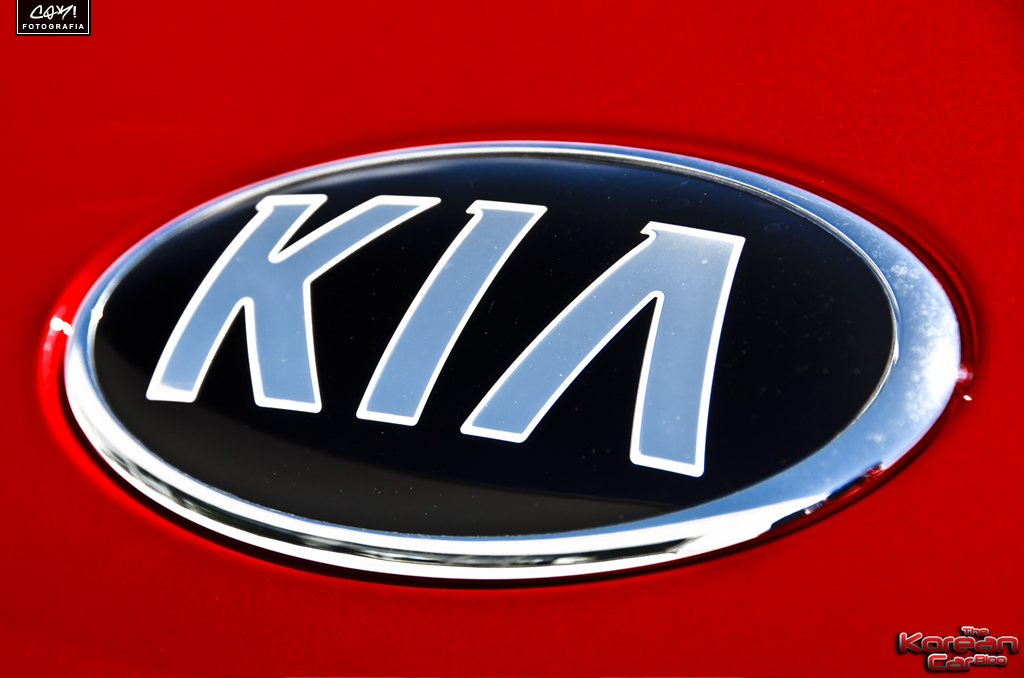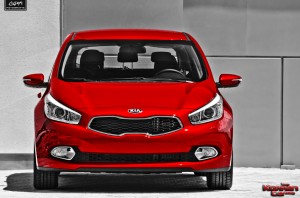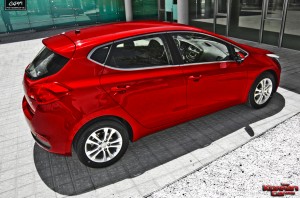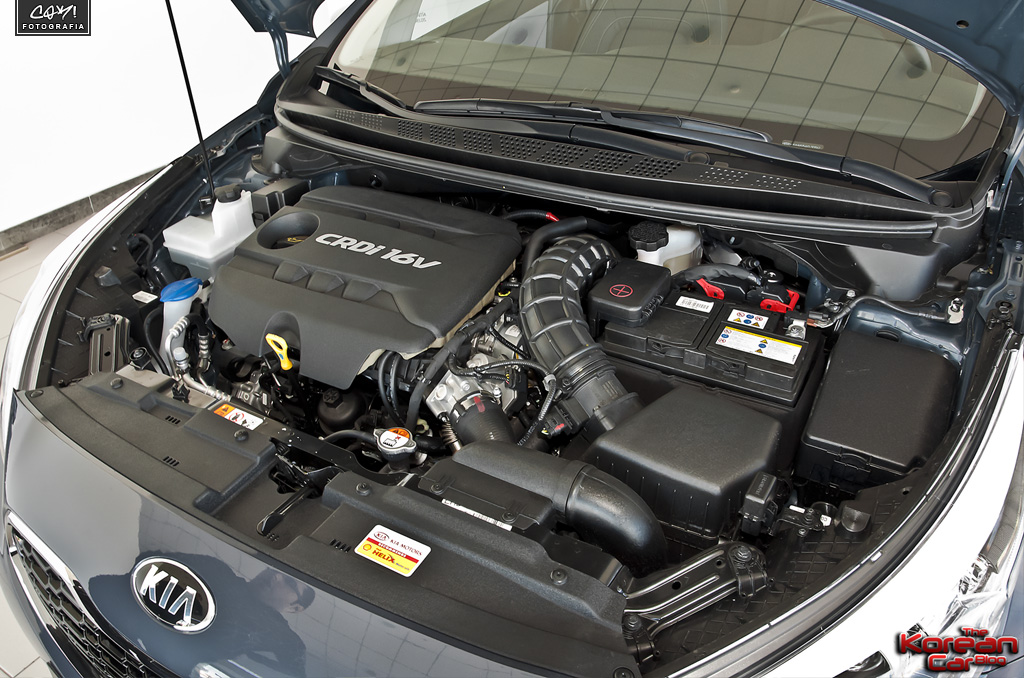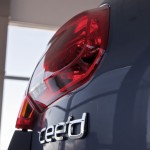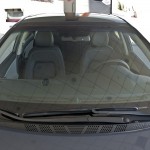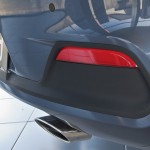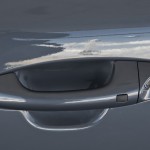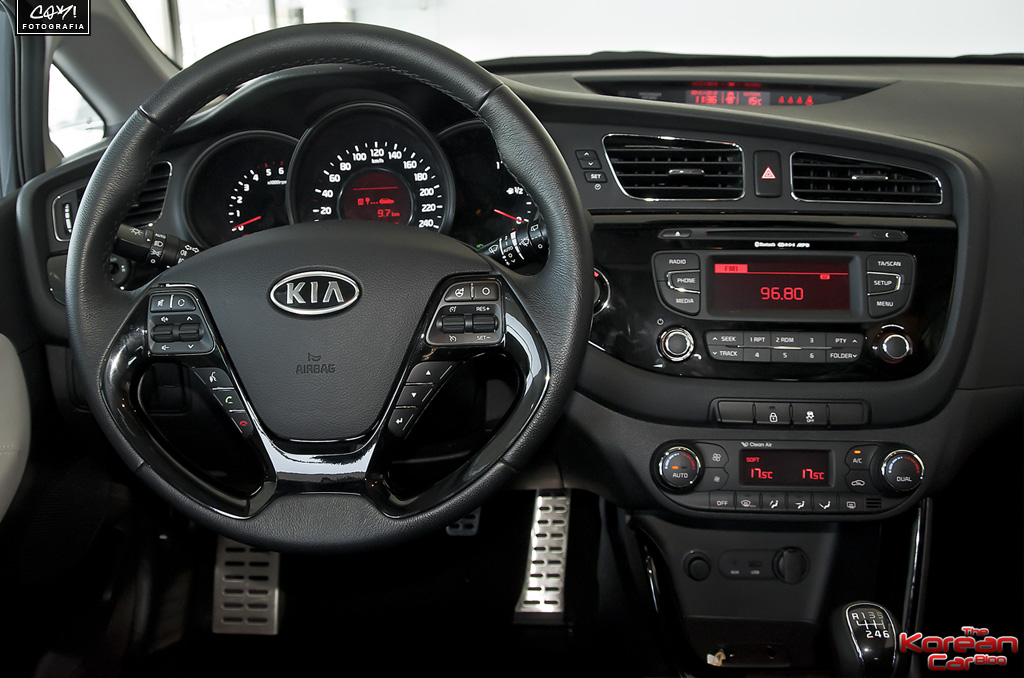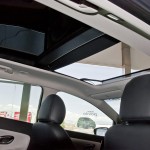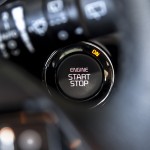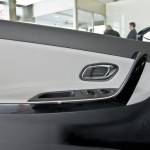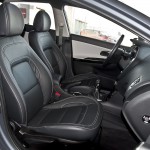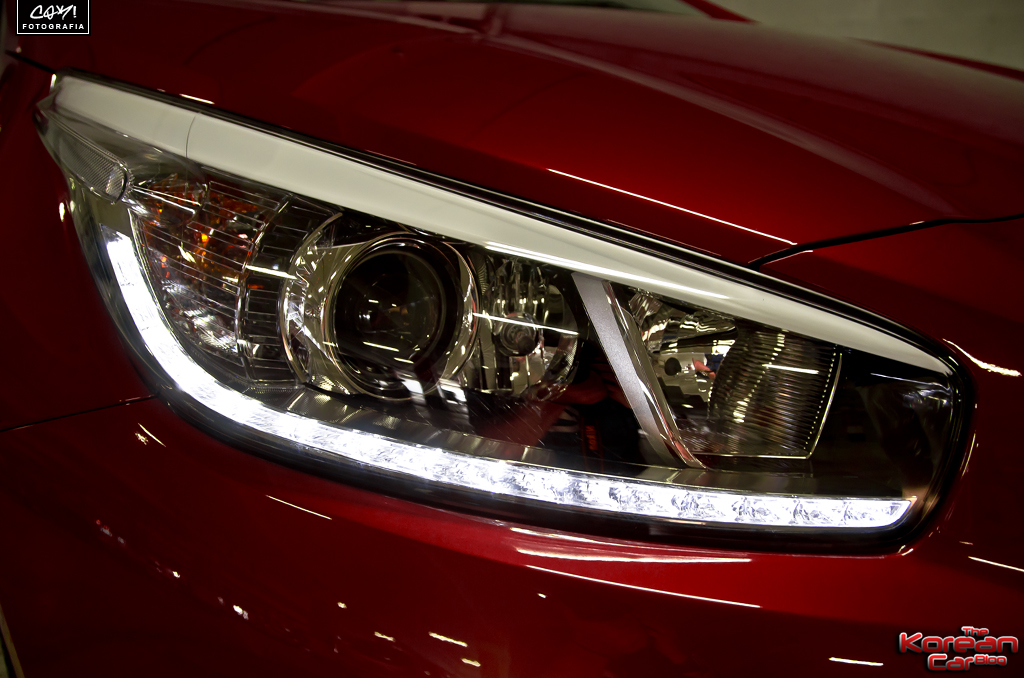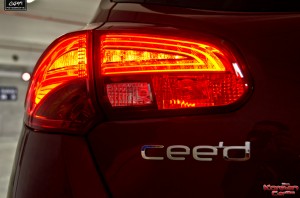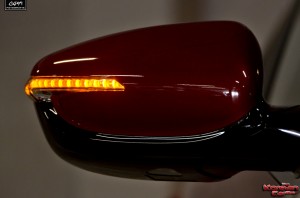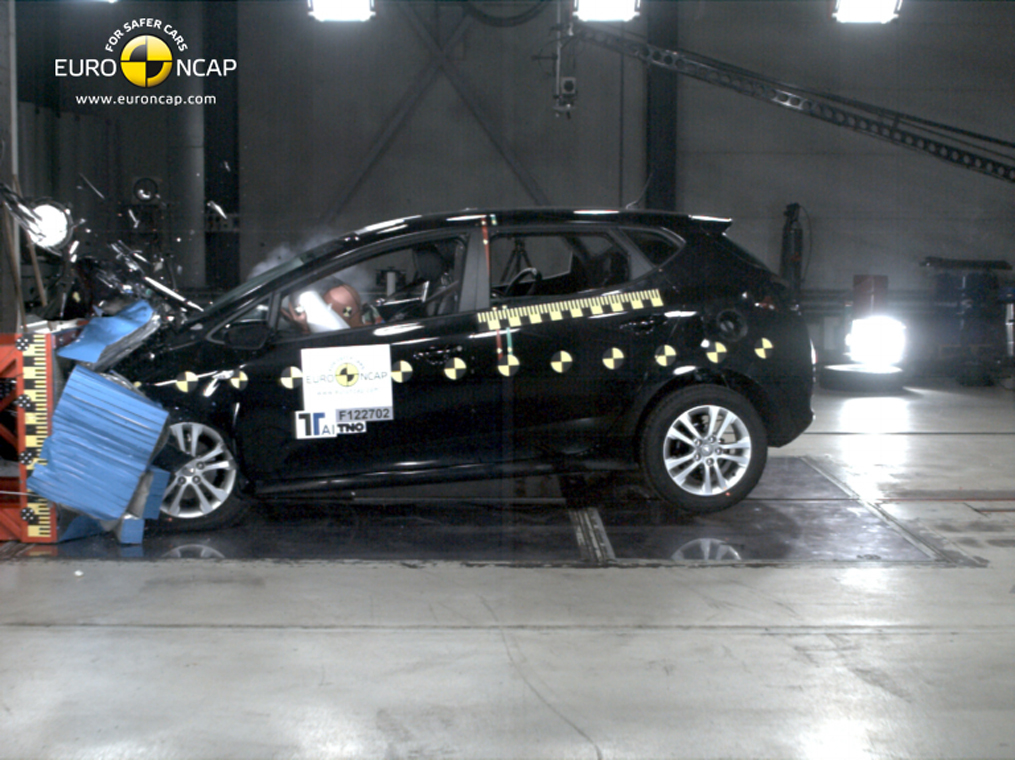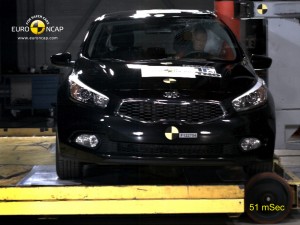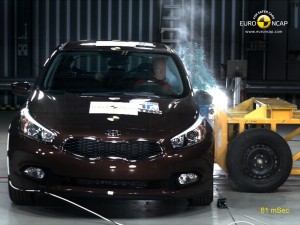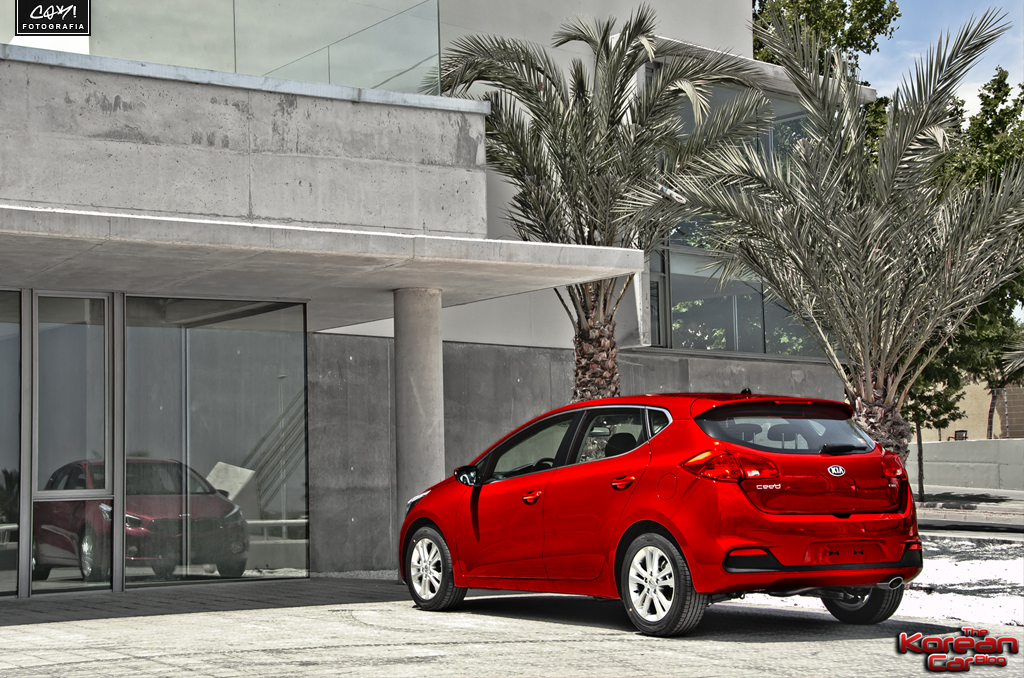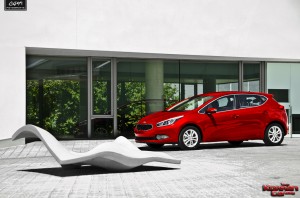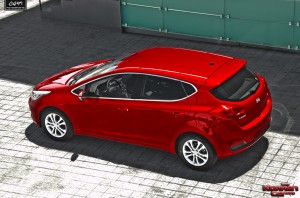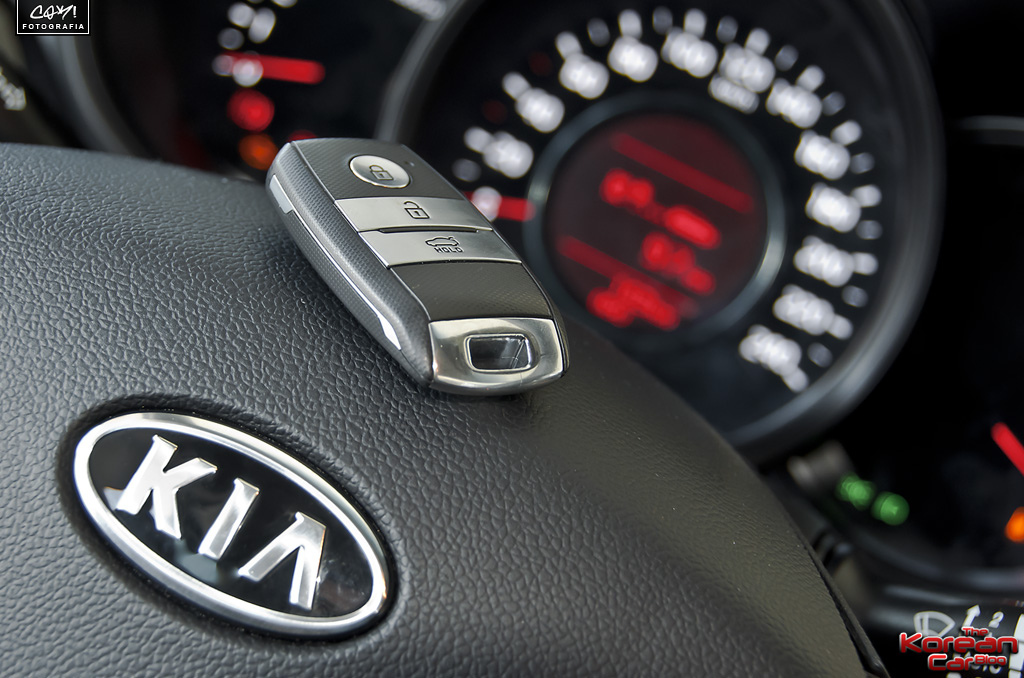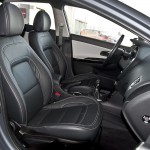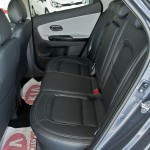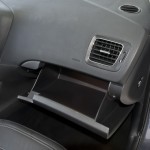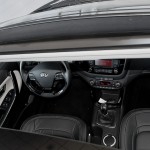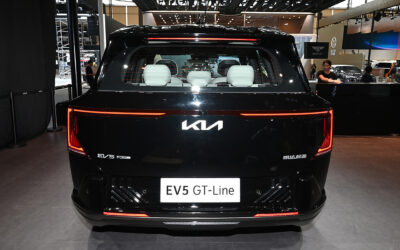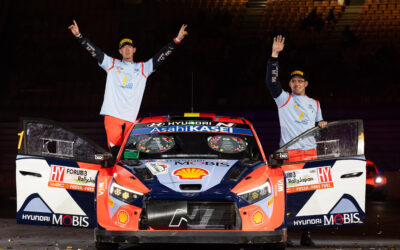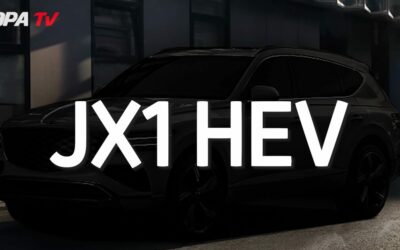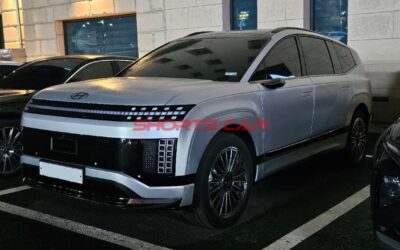More sophisticated, more efficient, more refined and with a more engaging driving experience than its predecessor, that’s Kia definition for the second generation C-segment cee’d, but it’s true? Today we will analyze all of these sections.
The new cee’d is expected to build on the succes of the original model (first Kia car designed and manufactured in Europe), further establishing Kia as one of the leading automotive brands in Europe. Launched in 2007, the original cee’d was landmark and game-changing model for Kia. Designed, developed and built in Europe, cee’d was the first model to establish Kia as a serious contender to the established brands. “The original cee’d was a paradigm shift for Kia, taking the company into the hotly contested C-segment with a truly competitive car for the first time” comments Paul Philpott, Chief Operating Officer, Kia Motors Europe.
The new Kia cee’d grows to 4,31 meters of length (which is 5 cm larger than the precedent cee’d hatchback and 1 cm lower). The wheelbase remains in a “noteably” 2,65 meters. The Sportswagon bodywork grows up until 4,505 meters. Actually, Kia make the debut of the All-New K3 sedan (known as Forte/Cerato in other markets) in the Korean market, but is not confirmed yet if will come to Europe. Kia has improved the coefficient of drag (Cd), passing from 0.33 to 0.30. It’s a really better than, for example a SEAT León has (0.32) and a Renault Megane (0.33). Kia says it has increased the torsional stiffness of the chassis by 45%. The new model’s sleek silhouette was shaped by extensive testing in the state-of-the-art wind tunnel at Kia’s R&D centre at Namyang, Korea. The new model debuts All-New Kia brand logo.
Early next year, the 2012 cee’d hatchback will be completed with a 3-door version named pro_cee’d, only available in the European market, as the rest of the range. Using the same front lines already see in his 5-door hatchback version (debuted at the 2012 Geneva Motor Show), the new pro_cee’d uses other significant resources – especially the lower body and the rear pillar. Recently Michael Choo, Kia’s head of global public relations, confirms “a hot hatch is coming next year to Europe in the form of sporty versions of the cee’d and pro_cee’d models.” The high-performance cee’d will reportedly feature a sport-tuned suspension and a turbocharged T-GDi 2.0-liter four-cylinder engine with approximately 220-230 hp (164-172 kW / 223-233 PS).
In Europe, the Kia cee’d hatchback are available with two petrol engines (1.4 CVVt “Gamma” with 100 hp and 1.6 GDi “Gamma” with 135 hp) and two “CRDi” diesel engines (1.4 CRDi with 90 hp and 1.6 CRDi de 128 hp). All of this engines are available with six speed manual gearbox. Depending on version, the 1.6 GDi will also be available with Kia’s all-new six-speed Dual Clutch Transmission (DCT), which improves fuel efficiency and delivers smooth automatics gears shifts for maximum comfort. We don’t have the opportunity to test this gearbox.
Developed by Kia’s in-house transmission development team in partnership with a German-based engineering firm, the DCT makes the Korean brand one of a very small number of car makers in the world to produce its own dual-clutch transmission. The DCT combines two manual transmissions within a single housing, each with its own dry clutch. One transmission shaft is dedicated to 2nd, 4th, 6th and reverse gear, while the other operates with 1st, 3rd and 5th gears.
Working in parallel, one shaft prepares to engage the next ratio, while the other is still engaged with a gear. Electric motor-driven actuators controlled by the Transmission Control Unit (TCU) execute gear selection and clutch engagement, resulting in swift and precise gear changes and uninterrupted torque transfer to the driven wheels, with a minimum of the efficiency loss normally associated with conventional automatics (with a torque converter).
As with other Kia models in Europe, new cee’d will be available with fuel-saving technologies developed under the company’s EcoDynamics sub-brand to optimise efficiency and lower emissions. These technologies, which will we available on both diesel and petrol models with manual transmission, include ISG (Intelligent Stop & Go), low-rolling resistance tyres and an alternator management system (AMS). Today we’ll tell you in detail the impressions of the Diesel 1.4 CRDi 90 hp, with 6 speed manual transmission.
Higher quality cabin materials and a broader range of high-tech equipment will ensure the interior of new cee’d matches the premium exterior appearance. Primary and secondary controls are grouped in a driver-oriented layout for intuitive ease of use, while new standard equipment will include tilt and telescopic steering wheel adjustment, iPod, Aux and USB support, six speaker audio system and a multi-mode trip computer.
A choice of bright chrome, piano black and anodized metal trim accents will be offered, while indirect LED lighting of the centre console and sweeping “vertical fin” door handles establish an upmarket ambience for the cabin. The seat and cabin trim will be available in a choice of two colours as standard — black one-tone and stone beige two-tone — in cloth, with a full leather interior available on high specification versions.
Available features will include enhanced instrumentation — with a TFT Supervision Cluster — delivering high-definition resolution clarity of the instrumentation pinnacle, dual-zone climate control, powered driver’s seat adjustment with a memory and a full lenght (1.045 mm long) powered panoramic sunroof. New cee’d will be available, depending on version, with LED daytime running lights, fixed cornering lamps (illuminated depending on steering angle), and advanced HID headlamps hat turn the low beam to match curves in the road and enhance the driver’s night vision.
Parking can be made easier with the new Parallel Park Assist System (PPAS). This features front, side and rear sensors and automatic steering control by an on-board computer to safely perform parallel parking. The driver remains in control of the accelerator and brake. Kia continues to make safety a top priority and the new cee’d features advanced active and passive safety technologies to ensure maximum protection for its occupants and other road users. Kia is determined to achieve the maximum rating when tested by EuroNCAP with this new model.
Available active safety features will include ESP (Electronic Stability Program), ABS (anti-lock braking system), BAS (emergency Brake Assist System), HAC (Hill Assist Control) to prevent roll-back, VSM (Vehicle Stability Management) and ESS (Emergency Stop Signal) which flashes the brake lights when the system detects that the driver is making an emergency stop.
In terms of passive safety, the bodyshell is constructed using a high percentage (57 per cent) of ultra high-tensile steel and features numerous improvements to enhance impact resistance. New transverse cross-members are fitted to link the front and rear suspension mounts, new pressings link the rear trunk floor to the tailgate opening and the rear roof rail is connected to the C-pillars and a new floor cross-member to create an extremely strong ‘safety ring’.
Side impact protection is enhanced with 50 per cent thicker door beams, plus a stronger roof cross-member between the B-pillars and side sills made from ultra high-tensile steel. Each new cee’d is fitted with six airbags as standard – front, front side and full length curtain. Pedestrian safety is improved with the adoption of collapsible headlamps, a stiffer lower bumper lip, and shock-absorbing structures in the hood and its hinges. Recently new cee’d obtains five stars in EuroNCAP crash test, click here for more information.
We have drive the four versions availables in the cee’d range, two petrol -100 to 135 hp and two diesel–90 and 128 hp. The 90-hp during testing of a week, the other three in a brief presentation to the press model. The 90 hp diesel engine operates smoothly and is relatively quiet. Our test unit had not stopt & start system that do have units for sale in Spain. In our homing -143 km by highway at an average of 120 km / h circulating in the real gear as possible-has spent 5.9 l/100 km, which is not to much.
Engine I test would be a “perfect” engine if it was not cost you lap up. You need 9.2 seconds to accelerate from 80 to 120 km/h. The lack of drive not only roadside note, also seen in town, when you gain speed from low revs, for example, if it is a cross out fairly quickly. These problems were not present in the previous version of the cee’d above (with 115 hp engine).
The 1.4 CRDi diesel engine 90 hp in town is less pleasant than the same gasoline engine and 10 hp more because it goes worse from standstill and is noisier, but on motorways is better because you can keep a high tempo more easily. We were surprised at what they give to it the 90 hp compared to 128 hp the most powerful diesel version. Despite the vast difference in power, it seems that a lot more push-we check when we test them carefully and measure their performance. Cold is noisy.
The petrol version of 135 hp conveys the feeling of being less powerful than states. There is very strong and has trouble quickly gain speed and go from standstill. Given the price difference between the two petrol variants € -1,500 equal equipment (comparative tab) – we find most interesting option for 100 hp and spend that money on equipment (or fuel).
The 100hp petrol engine has seemed best suited for city driving and around. In these circumstances it may be very nice because it responds well to throttle and operation is very smooth. On roads with steep slopes or when overtaking constantly need to use the gearbox to keep the engine at a high rate. If there is little attention to the change and circulated in gear needs many meters to win badly-speed-recovers.
The front seats are placed at such a height above the ground that it is not uncomfortable in and out of the car. In a Volkswagen Golf are lower and there are people that can cost some effort. During normal driving not missing to give more support but do not excel in this aspect. The leather gives very hot, if you want to bypass it must also give maintenance assistant in the lane, the automatic parking system, the xenon headlights and bending, as all form a single optional package costs 2000 euros.
In the most equipped, the steering wheel has buttons to operate the audio system, telephone, trip computer and cruise control. At first it may seem overwhelming but it’s so easy to get control of them. The instrument cluster is different in version “Emotion” (the most equipment, image) from the rest (picture): the center of the table is made up of a screen in which represents a speedometer needle and various information (computer system lane departure warning and several warnings). This screen looks great, regardless of outdoor lighting, and is a technical solution that is only found in much higher priced cars like the BMW 7 Series, a Mercedes-Benz S-Class and a Range Rover.
In the rear, a Volkswagen Golf has some (few) inches of legroom, width and height but is better Kia (comparison chart). Under the front seats there is room to put your feet, allowing you to travel more comfortably though, depending on how you plan to advance the seat, you may hit against a piece of plastic pipe made for air conditioning (and it will not solidly anchored). These two places are those with Isofix anchoring points for child seats.
The central square, as usual, seems destined for occasional use since the bench is slightly higher than the sides, consequently, there is less space to the ceiling and has the backing and the stool harder. For other models, the cee’d has the advantage that the floor is almost flat in the rear, so it is more convenient to place the feet and moving from side to side of the car.
With the panoramic roof (the glass covers two rows of seats) not only lost some height on all seats, interior lighting also is poorer because there is only one front ceiling lighting in the area closest to the windshield. If you want to see back-to find something or to place the child seat, you have to help reading lights. Kia could solve this problem by having kindle these lights automatically when you open the doors.
The version we tested-level of equipment “Drive” – not has the keyless access system. The mirrors are automatically displayed (when folded, this feature can be disabled to not strike a column or wall). To open the car you have to press the button on the handle to unlock the lock (in many other brands, simply pull it). The test unit had electric seat regulations, an option not available in the units for sale in Spain.
All versions are equipped with an air conditioner running two programs – “soft” and “fast” – in addition to the automatic. Very cold and quickly, and is not required to be making the adjustments.
The trunk has a capacity of 380 liters. There are 40 liters more than in the previous model, although that figure includes volume Kia drawer six inches tall and compartments of various sizes that are below the floor, just above the spare wheel, smaller than the other four. This drawer is standard on all versions. The cee’d is its size passenger more luggage capacity, although there are larger, such as the Citroën C4, the Honda Civic and the Fiat Bravo (comparative listing).
You can expand the capacity by folding down the rear seat backs. They do it in a ratio 60/40. The backs are flush with the boot floor, but the bottom is not flat load because the area closest to the front seats is higher.
The trunk of the cee’d is easy to carry because it has regular shapes and edge load is not high. There are two small holes without lid to keep things on the ends, with the wheel arches. On the right side there are two Velcro straps to hold emergency triangles. It is possible to fix fastening a load network via the four loops that are in the corners of the floor. There are also two bag hooks and a 12V socket, for example, connect a cooler.
Key facts:
- Engine size: 1.396cc.
- Horsepower: 90 hp to 4000 rpm.
- Horsepower RPM: 1500-2750 rpm.
- Top Speed: 170 km/h
- 0-100km/h: 14.2 seg.
- Fuel Economy: 4,1 L/100.
- CO2: 114 g/km.
- Gearbox: 6 speed manual.
- Weight: 1.365 kg.
- Fuel tank capacity: 53 liters.
- Lenght: 4310 mm.
- Width: 1780 mm.
- Height: 1470 mm.
- Wheelbase: 2650 mm.
- Luggage capacity: 380 liters.
- CX Aerodynamic coefficient: 0,30.
Equipment:
- ABS.
- Electronic traction control.
- Brake assist system.
- Four disc brakes including two ventilated discs.
- Drivers airbag, passengers airbag with de-activation switch.
- Height adjustable seat belt with pre-tensioners on drivers seat and front passenger seat.
- Two head restraints on front seats with height adjustment, three head restraints on rear seats with height adjustment.
- Isofix preparation.
- Height adjustable seat belt on driver side rear seat, height adjustable seat belt on passenger side rear seat, 3-point seat belt on central rear seat.
- Front and rear side curtain airbags.
- Front side airbag.
- Stability control system.
- Halogen headlights.
- Brake LED lights.
- LED day-light lights.
- Front fog and cornering lights.
- Hill holder.
- Automatic air conditioning with fully automated climate control and two climate control zone.
- Central door locking: Operated by remote Includes dead bolt.
- Front and rear electric windows with one-touch on all windows.
- Electronic Power steering and Flex Steer System.
- Leather covered multi-function steering wheel with tilt adjustment and telescopic adjustment
- Audio system with CD player that reads MP3 CDs ; radio receives AM/FM/LW and RDS.
- USB + AUX + iPod connection.
- Six speakers.
- Bluetooth connection.
- Driver seat: individual type, heated adjustable height, passenger seat: individual type, heated.
- Asymmetrically folding rear seats: bench type with space for three people; reclining with zero electric adjustments.
- Five seats configured 2+3.
- Painted front and rear bumpers.
- Body colour power door mirrors ; heated with integrated indicator LED lights.
[miniflickr photoset_id=72157631466370584&sortby=date-posted-asc&per_page=23]
Special thanks to Valgauto Motor Kia’s dealer for providing us the car and Coki Photography for this excellent pictures.


